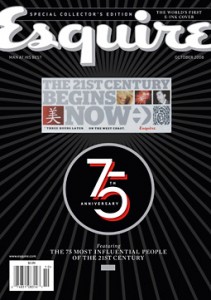Back in late October, Gannett Co. announced plans to cut 10% of its workforce. This week, the hacking began in earnest. A sampling:
- The Louisville Courier-Journal cut 69 positions, or 6.5% of the staff.
- The Reno Gazette-Journal will cut 61 positions, close two weekly publications and idle a commercial printing facility. The weeklies are the Douglas Times and Fallon Star Press.
- A total of 206 jobs will be eliminated at Gannett’s New Jersey papers, including the Asbury Park Press, Cherry Hill Courier-Post, East Brunswick Home News Tribune, Bridgewater Courier News, Parsippany Daily Record and Vineland Daily Journal.
- The Arizona Republic was also caught up in the Gannett downsizing. The Phoenix Business Journal reports that 68 employees were laid off on Wednesday, including 25 from the newsroom. The nearby East Valley Tribune recently announced plans to reduce its number of publishing days.
- Also maimed in the Gannett buzz saw is the Nashville Tennessean, which will lose 90 jobs out of 1,140 total employees. One-quarter of the cuts are in the newsroom.
- The Town Talk of Alexandria, Louisiana will cut 14 jobs.
- Ninety-two jobs were lost in Gannett’s Wisconsin properties. Two weekly newspapers – the Wrightstown Post Gazette and the Denmark Press – will also close.
- The Battle Creek Enquirer will lose nearly half its staff, a total of 50 employees out of 105 positions. The paper also shut down its printing press and move all printing operations to Lansing.
- Florida Today will lay off 30 employees and buy out six others.
- The Des Moines Register will eliminate 41 jobs and leave another 15 open positions unfilled. Among the casualties is the newsroom’s editorial cartoonist, who has been with the paper for 25 years. The cutbacks amount to 6.9% of the workforce.
- The Green Bay Press-Gazette cut 22 jobs at its daily and weekly publications. However, no reporting or advertising sales jobs were eliminated.
- The Hattiesburg American will move its production operations to a nearby newspaper and eliminate 38 jobs. The publisher assured readers that they will see no difference in the newspaper as a result.
- The Honolulu Advertiser accepted 41 buyouts and laid off another 10 employees.
- The Mississippi Clarion-Ledger cut 33 jobs through layoffs, buyouts and elimination of open positions. The publisher also promised that quality will be unaffected.
- The Indiana Journal & Courier is cutting 13 jobs, about 6.5% of its workforce.
- The Poughkeepsie Journal eliminated 14 staff positions, including three open jobs and seven buyouts.
All this and more is being documented in gruesome detail on the Gannett Blog, Jim Hopkins’ remarkable watchdog website. Gannett may not be revealing the extent of its job cuts, but Hopkins has assembled field reports from employees at 71 newspapers, as of today. In addition, more than 100 comments have been posted. Peter Kafka of All Things Digital pays homage to the blog here, as does Editor & Publisher, which quotes extensively from it.
Unrelated to the Gannett moves:
- The Minneapolis Star Tribune has asked its unions for $20 million in cost cuts, saying “the survival of the company is at stake.” The Strib is riddled with debt. It cut $10 million earlier this year, but its $400 million in debt demands more drastic action. The paper has already cut $50 million since 2007 through attrition, layoffs, buyouts and other means.
- The Bakersfield Californian will lay off 25 staffers. The move was prompted by “the steepest and sharpest drop off” in advertising revenue in the newspaper’s history.
- The Chicago Tribune will idle an unspecified number of newsroom employees by the end of the week. Update: A total of 11 newsroom employees will lose their jobs, including both of the Tribune‘s New York correspondents.
And to all a good night…
Comments Off on Ax Falls at Gannett; Employees Blog the News




 Tribune Co. CEO Sam Zell must be relieved to be back on familiar territory in the real estate business. He’s just put the neo-Gothic
Tribune Co. CEO Sam Zell must be relieved to be back on familiar territory in the real estate business. He’s just put the neo-Gothic 

